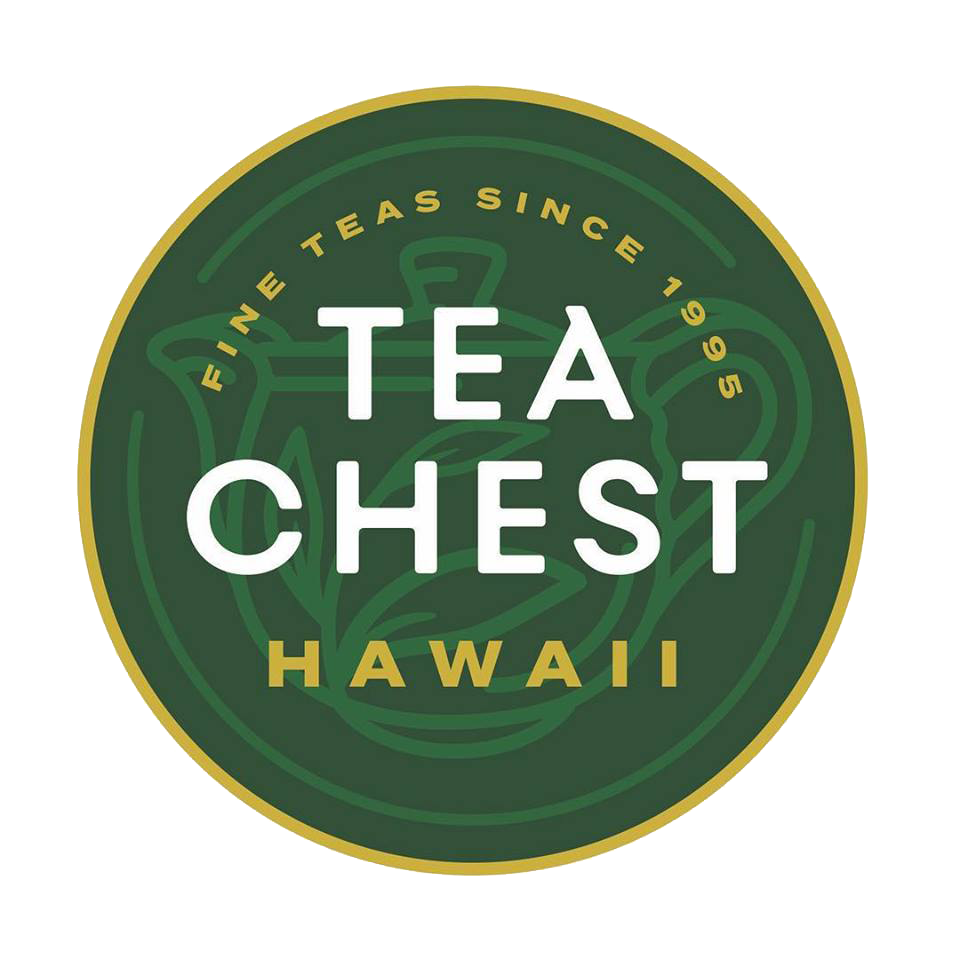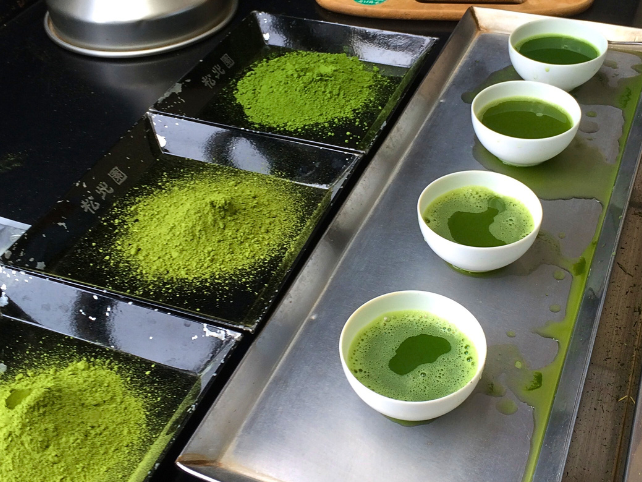Discover The Magic of Matcha
Matcha, the vibrant green tea powder, has taken the world by storm. From traditional Japanese tea ceremonies to trendy lattes and desserts, this centuries-old beverage is now a global sensation. We explore matcha’s history, health benefits, nuances and versatile uses in this article.
A Brief History
Matcha’s story begins in China during the Tang Dynasty (618-907 AD), where tea leaves were steamed and formed into bricks for storage and trade. This method was later adopted by Japanese monks who brought tea seeds and the art of tea preparation to Japan. By the 12th century, the Zen Buddhist monk Eisai had popularized the cultivation and consumption of powdered tea in Japan, leading to the development of the Japanese tea ceremony.
Matcha and the tea ceremony, as we know it today, gained recognition in the 16th century under the influence of the buddhist monk, Sen no Rikyū, the tea master who formalized the tea ceremony (chanoyu). At this point, tea was enjoyed mainly by nobility and aristocrats.

Rikyū was secretly a Christian convert and fashioned tea ceremony after communion service at which bread and wine are consecrated and shared. In his approach, Rikyū emphasized beauty in simplicity and mindful repentance. The ceremony itself was austere and carried out with a spirit of humility. Rikyū wanted this style of tea ceremony to be accessible to everyone. His tea room design included a small door that required all to bow low to enter.
At the same time, Hideyoshi Toyotomi rose from a peasant background to become the de facto military ruler of Japan. Toyotomi sought the company of teamaster Rikyū for personal and political reasons. Toyotomi, blinded by power and opulence, built a golden tea room where the walls were gilded in gold leaf. The clash in philosophy between the two men caused Rikyū to defy Toyotomi and in turn the ruler ordered the monk to commit seppuku, taking his own life by disembowelment.
Cultivation and Production
Matcha is made from shade-grown tea leaves called tencha. The plants are covered with bamboo mats or tarps for about three weeks before harvest, which increases chlorophyll content and gives the leaves their deep green color. After harvesting, the leaves are steamed, dried, and then ground into a fine powder using granite stone mills. The result is a bright green powder with a unique, slightly sweet, and umami flavor profile.
Matcha Health Benefits
Green Tea has notable health benefits as most people already know. Matcha is powdered green tea so when we consume the entire leaf, the health benefits of green tea get amplified. Here are some of matcha's health benefits.
- Rich in Antioxidants: Matcha is packed with antioxidants, particularly catechins like EGCG (epigallocatechin gallate). These antioxidants help protect cells from damage and reduce inflammation, potentially lowering the risk of chronic diseases.
- Boosts Metabolism: The caffeine and catechins in matcha may help boost metabolism and increase fat burning, making it a popular choice for those looking to manage their weight.
- Enhances Mental Clarity: Matcha contains L-theanine, an amino acid that promotes relaxation without drowsiness. Combined with caffeine, the amino acid can enhance mental clarity and focus, providing a calm yet alert state of mind.
- Supports Heart Health: Regular consumption of matcha may help lower LDL cholesterol and triglycerides, contributing to better heart health. The antioxidants in matcha also promote healthy blood vessels and circulation.
- Detoxifies the Body: The chlorophyll in matcha gives the tea its vibrant green color but also helps detoxify the body by aiding the removal of heavy metals and harmful chemicals.

How to Make Matcha - Traditional Preparation
The traditional preparation of matcha is a meditative process central to the Japanese tea ceremony.
Here’s a step-by-step guide:
- Sift 2-3 grams of matcha into a matcha bowl (chawan). Break up any clumps.
- Add 1-2 oz of hot water (175F) and stir to make a paste.
- Add 4 oz of hot water. Use a bamboo whisk (chasen) in a top-down zigzag motion until the matcha is frothy. Froth is a sign the tea is fully aerated which enhances flavor nuances.
This ritual offers the opportunity to practice zen-fulness and being present. Don’t rush. Slow down and enjoy the moment as your breathing and heart rate slow, the body relaxes and your mind clears.
Modern Uses - Matcha Latte and Beyond

Matcha’s versatility has led to its inclusion in a myriad of contemporary recipes:
Matcha Lattes: Blend matcha with steamed milk for a creamy, energizing drink. Smoothies: Add a teaspoon of matcha to your favorite smoothie for a nutritional boost. Baking: Incorporate matcha into cakes, cookies, and pastries for a unique flavor and vibrant color. Savory Dishes: Use matcha as a seasoning for noodles, soups, or even as a rub for meats.
The Best Matcha Tea
In Japan, there remains only one category of green tea powder, MATCHA, and the price is tied to the grade of the tea powder. Quality (grade) can vary greatly, and more recently two categories of matcha have emerged in the West: ceremonial grade and culinary grade.
Ceremonial Grade: This is the highest quality matcha, reserved for traditional tea ceremony and drinking on its own. Characteristics include:
- Color: Vibrant, bright green
- Texture: Very fine, almost like talcum powder
- Flavor: Smooth and delicate, with a natural sweetness and slight bitterness
- Source: Often comes from the first harvest of the season, using the youngest and most tender leaves
Culinary Grade: This is more affordable and is often used in cooking and baking. Characteristics include:
- Color: Duller green, sometimes with yellowish tones
- Texture: Slightly coarser, but still finely ground
- Flavor: Stronger, more astringent, with a noticeable bitterness, which works well in recipes
- Source: Can come from the second or third harvest, using slightly older leaves
Many matcha drink powders sold in big box grocery stores contain powdered milk and sugar so consumers beware and read the back label for the ingredients.
Best Growing Regions
Other countries produce green tea powder. However, matcha is produced only in Japan, and certain regions are renowned for producing the highest quality matcha.
Uji, Kyoto Prefecture
Uji is considered the heartland of matcha production. The region's rich history and ideal growing conditions, including its unique climate and soil, contribute to producing some of the finest ceremonial-grade matcha.
Nishio, Aichi Prefecture
Nishio is known for its high-quality matcha used in traditional tea ceremony. The region's tea fields benefit from a warm climate and ample rainfall which results in vibrant green leaves.
Shizuoka Prefecture
Shizuoka is one of the largest tea-producing regions in Japan and is famous for all grades of matcha. The region's diverse microclimates allow for the cultivation of various matcha varieties.
Matcha Saves Japan’s Tea Industry
After the Fukushima disaster in March 2011, our Japanese loose tea sales dropped dramatically for fear of radiation contamination. The radiation zone extended 50 miles from the nuclear plant. The distance from Fukushima to Japan’s tea regions - Shizuoka (260 miles) to Kagoshima (1000 miles) - are far enough away to negate contamination. But, the fear was real.
Demand for Japanese loose leaf teas remain flat. However, matcha sales steadily grow and today make up 75% of Japan’s tea exports.
My Matcha Sensei
As matcha became more popular, I realized I needed a sensei, or teacher. I called a friend who heads the Japan Tea Exporters Association for a referral. Without hesitation, he said he knew the perfect sensei for me. From the get go we hit it off because it turns out he did his senior year of high school in Hawaii. Turns out that he is a 14th-generation matcha maker and his family is the “matcha mafia” in Japan. Needless to say, he’s taught me the finer points of matcha and has shown me behind-the-scenes things that the general public would not have access to.
Our Matcha

Our matcha is considered ceremonial grade in the west. It is grown and stone-milled in Uji, Kyoto, Japan by Shohokuen who has been making matcha since 1645. The matcha tea is USDA organic certification.
Conclusion
With its history, unique processing method, and revitalizing experience, authentic Japanese matcha is a tea lover’s delight and a must-try for a different kind of tea experience.
Written by Byron Goo


Share:
Creating The ʻIolani Palace Collection
Exploring the Versatility and Varieties of Tea